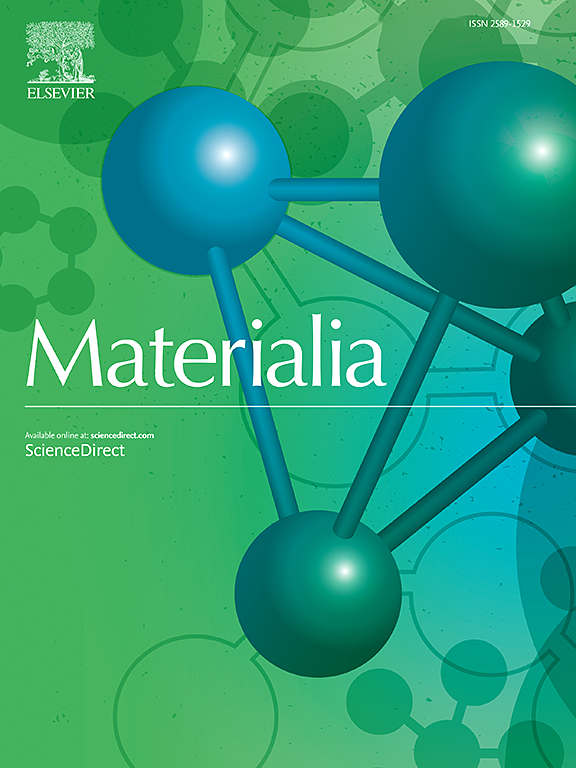Deciphering the role of microstructural length scale on corrosion behaviour of carbide free nano-structured bainite using immersion in chloride solution
IF 3
Q2 MATERIALS SCIENCE, MULTIDISCIPLINARY
引用次数: 0
Abstract
Nano-structured bainite (NSB) shows superior strength, ductility, and toughness owing to the nanometric microstructure. This study aims to provide a comprehensive understanding about the effect of microstructural refinement on aqueous corrosion behaviour of NSB while keeping the bainitic volume fraction constant. Two different austenitization temperatures (900 °C and 1000 °C) followed by austempering at 250 °C resulted in different prior austenite grain size (PAGS) which led to correspondingly different bainitic lath thickness. The specimens were subjected to immersion test in 3.5 wt% NaCl solution for 10, 20, 30, 40 and 50 days. Specimen having finer bainitic lath thickness displayed lower corrosion rate and weight loss due to immersion. Cross sectional imaging using scanning electron microscope (SEM) revealed shallower penetration of electrolyte in case of finer bainitic lath specimen resulting in formation of a compact, uniform and adhered corrosion layer in comparison to a loose and non-uniform layer observed for coarser bainitic lath specimen. Raman spectroscopy and x-ray photoelectron spectroscopy (XPS) revealed oxyhydroxides to be present in larger proportions in specimens subjected to immersion for 10 days while specimens subjected to immersion for 30 days had higher proportions of oxides as compared to oxyhydroxides. Further immersion up to 50 days resulted in higher proportions of oxyhydroxides in case of both heat treated specimens. Electrochemical tests such as electrochemical impedance spectroscopy (EIS) and potentiodynamic polarization (PDP) conducted on specimens immersed for 30 days showed that finer bainitic lath specimen displays higher corrosion resistance despite having thinner corrosion layer owing to its high compactness.

求助全文
约1分钟内获得全文
求助全文
来源期刊

Materialia
MATERIALS SCIENCE, MULTIDISCIPLINARY-
CiteScore
6.40
自引率
2.90%
发文量
345
审稿时长
36 days
期刊介绍:
Materialia is a multidisciplinary journal of materials science and engineering that publishes original peer-reviewed research articles. Articles in Materialia advance the understanding of the relationship between processing, structure, property, and function of materials.
Materialia publishes full-length research articles, review articles, and letters (short communications). In addition to receiving direct submissions, Materialia also accepts transfers from Acta Materialia, Inc. partner journals. Materialia offers authors the choice to publish on an open access model (with author fee), or on a subscription model (with no author fee).
 求助内容:
求助内容: 应助结果提醒方式:
应助结果提醒方式:


